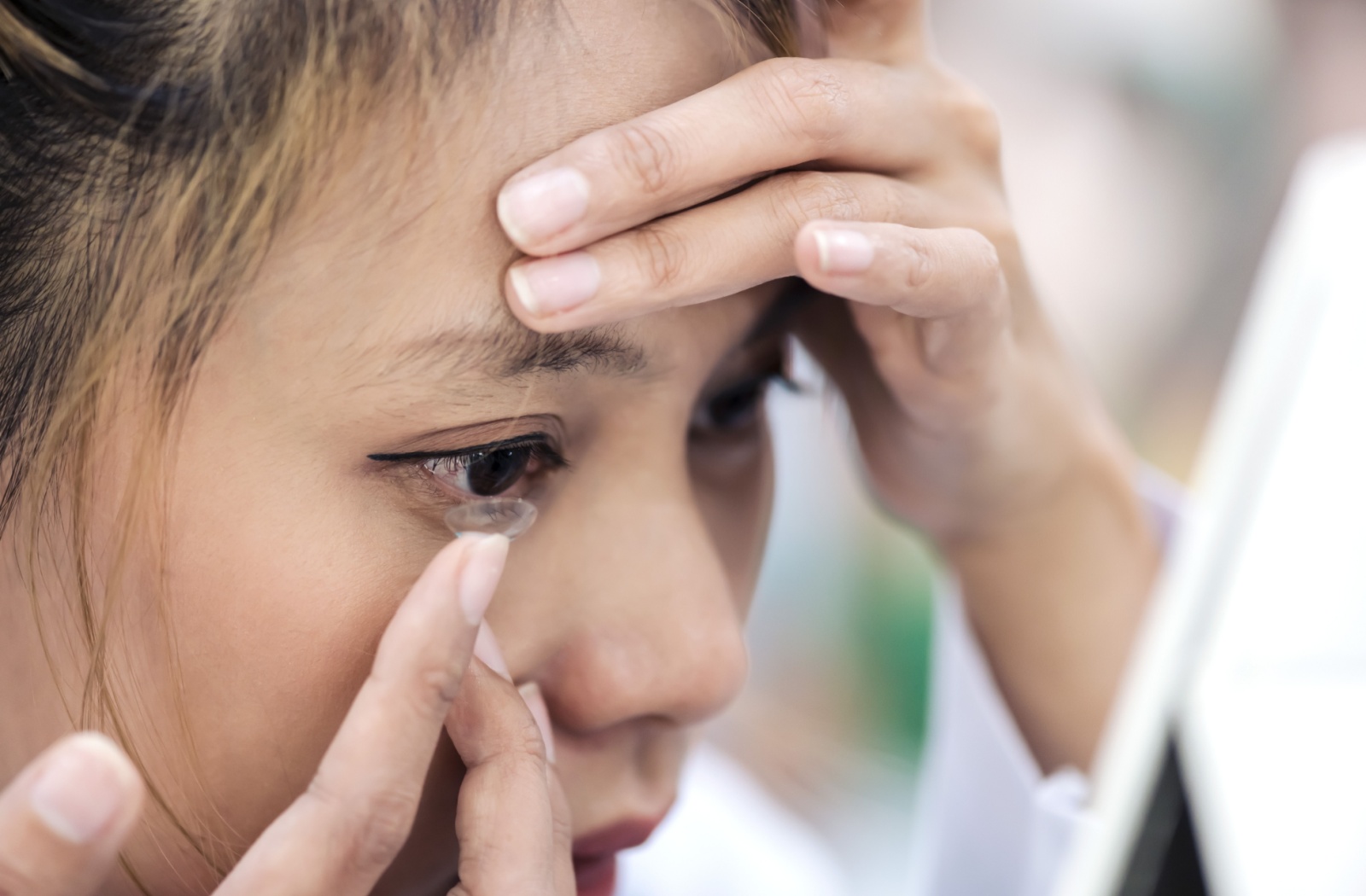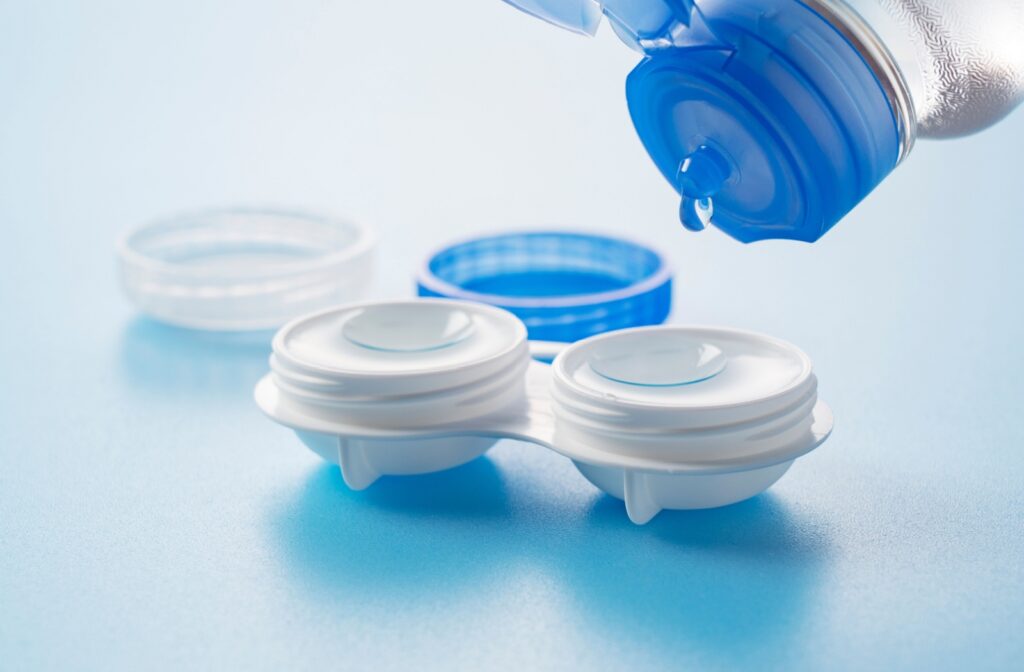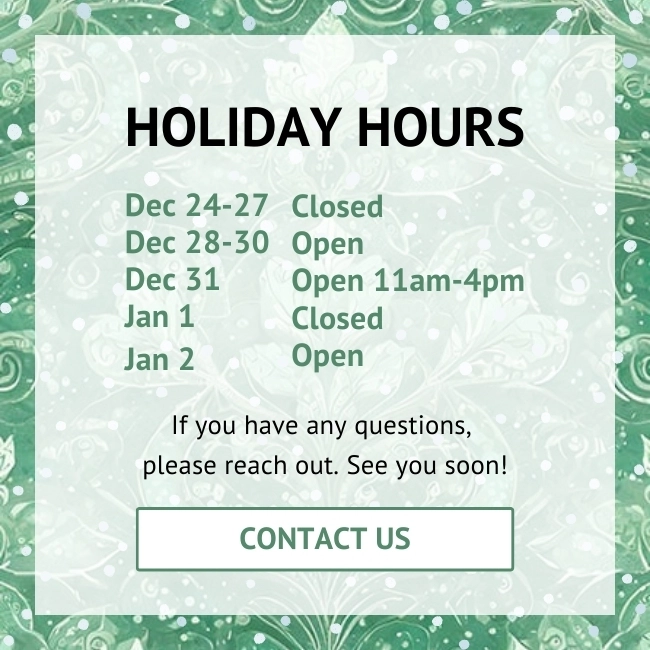A contact lens fitting is intended to find the best contact lenses for your eyes. Lenses come in different sizes, shapes, styles, and materials, so a fitting helps your optometrist determine which of these factors can correct your vision while maximizing your comfort. But what’s involved in this process?
A contact lens fitting involves several steps:
- A comprehensive eye exam
- A short consultation about your lifestyle and medical history
- A visual acuity test to determine your prescription
- Measurement of your eye to determine what type of contacts fits best
- Follow-up appointments to verify comfort and effectiveness
The Eye Exam
Before your contact lens fitting, you’ll normally have a comprehensive eye exam. During this exam, your eye care professional will check your eyes and your visual system for any sign of damage or harmful conditions. You can think of this process as similar to the yearly physical that you probably get from your family doctor.
An eye exam can detect a range of eye diseases and disorders, including:
- Glaucoma
- Cataracts
- Retinal detachment
- Age-related macular degeneration (AMD)
- Diabetic retinopathy
- Certain kinds of cancer
- Hypertension and cardiovascular diseases
It’s important for your optometrist to confirm whether your blurry vision is caused by refractive errors (nearsightedness, farsightedness, or astigmatism). Refractive errors can easily be corrected using eyeglasses or contact lenses.
Some serious eye conditions can cause blurry vision. If your optometrist does find that you have other eye issues, they may conduct additional tests and recommend a potential course of treatment.
If your eyes are healthy, then you’ll move to the next stage of the fitting.
The Contact Lens Fitting
A contact lens fitting consists of three major steps: the consultation, testing your visual acuity, and the fitting itself. We’ll look at each of these steps in turn.
Consultation
In the consultation phase, your optometrist will ask you about your medical history and your lifestyle. Depending on your health, your hobbies, your interests, and your profession, different kinds of contacts may be appropriate.
You may also be asked about your contact lens preferences. Such questions might include whether you’re interested in daily disposable lenses, weekly lenses, or monthly lenses. Your optometrist might also ask whether you’d prefer soft or hard contact lenses.
If it’s your first time getting fitted for contact lenses, or if you’re just not sure of the differences between these options, don’t hesitate to ask. Your optometrist will be happy to guide you through the process of selecting the best lens for your situation.
Testing Your Visual Acuity
In order to find out which kind of contact lenses you need, perhaps the most important step is determining the strength of your prescription.
This step is similar to what happens when we get glasses. Your optometrist will use a device to compare different prescription strengths. They may ask you to read off of a letter board so that they can judge which prescription is clearer.
Measuring Your Eyes
Contact lenses come in different types. Each type is designed for a particular purpose, balancing comfort with visual correction. To determine the kind of lens that best fits your specific visual needs, your eye doctor will need to take a number of measurements.
Your optometrist will assess the following:
- Your cornea: The cornea is the clear layer at the front and center of your eye that’s responsible for focusing light into your eye. Measuring the cornea ensures that your lenses fit properly over your eye.
- Your pupil and iris: It’s important that your contact lenses look natural and fit correctly over your pupil and iris. This step is even more important if you’re interested in coloured contacts.
- Your tear film: Contacts are only safe to wear if your eyes produce enough tears to keep themselves lubricated underneath your lenses. If you suffer from dry eye, your optometrist may recommend special contacts to reduce dryness and maximize lubrication.
Based on these measurements, your optometrist will either select the appropriate trial lens or will order custom design contact lenses that suit your needs. Depending on your prescription, you may be given trial contact lenses.

Follow-up Appointments
You’ll be given instructions on how long and how often you should wear the contacts. For people who are just starting, these instructions are important to help ease the eye into wearing contact lenses.
After your initial fitting, you may need to make one or more follow-up appointments. You will typically be asked to wear your contacts for a few hours before your appointment so that your optometrist can measure the effects of wearing the lenses. Your doctor will assess your eyes for dryness and will confirm that your lenses fit. They’ll also check that your vision has been adequately corrected, and that your lenses are safe, comfortable, and secure.
Once your optometrist is satisfied with the lenses’ fit, they’ll finalize a contact lens prescription. This will allow you to order more lenses. Contact lens prescriptions are usually different from those for glasses, so having a proper contact lens fitting is recommended.
If you ever find that your contacts are uncomfortable, don’t wait for a regular exam—contact your optometrist and make sure that you get your lenses adjusted.
Enjoy the Freedom of Contact Lenses
Glasses can be a fashion statement, but contact lenses offer a certain sense of freedom and style that glasses can’t replicate. For some people, contacts are the preferred way to go. For others, however, contacts and glasses both have a complementary function, with each being the optimal choice for different parts of a person’s life.
If you want to try out contacts for the first time, or if you want to try a new type of contacts, book an appointment at Mint Eyecare today. We can help you find contacts that feel right for you.




